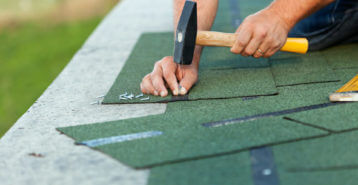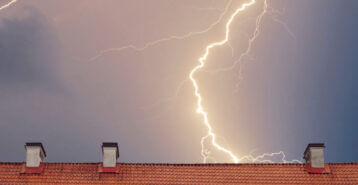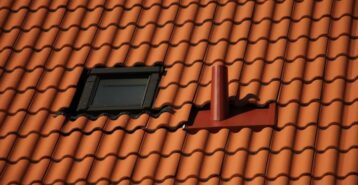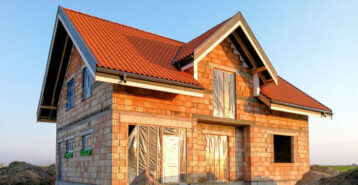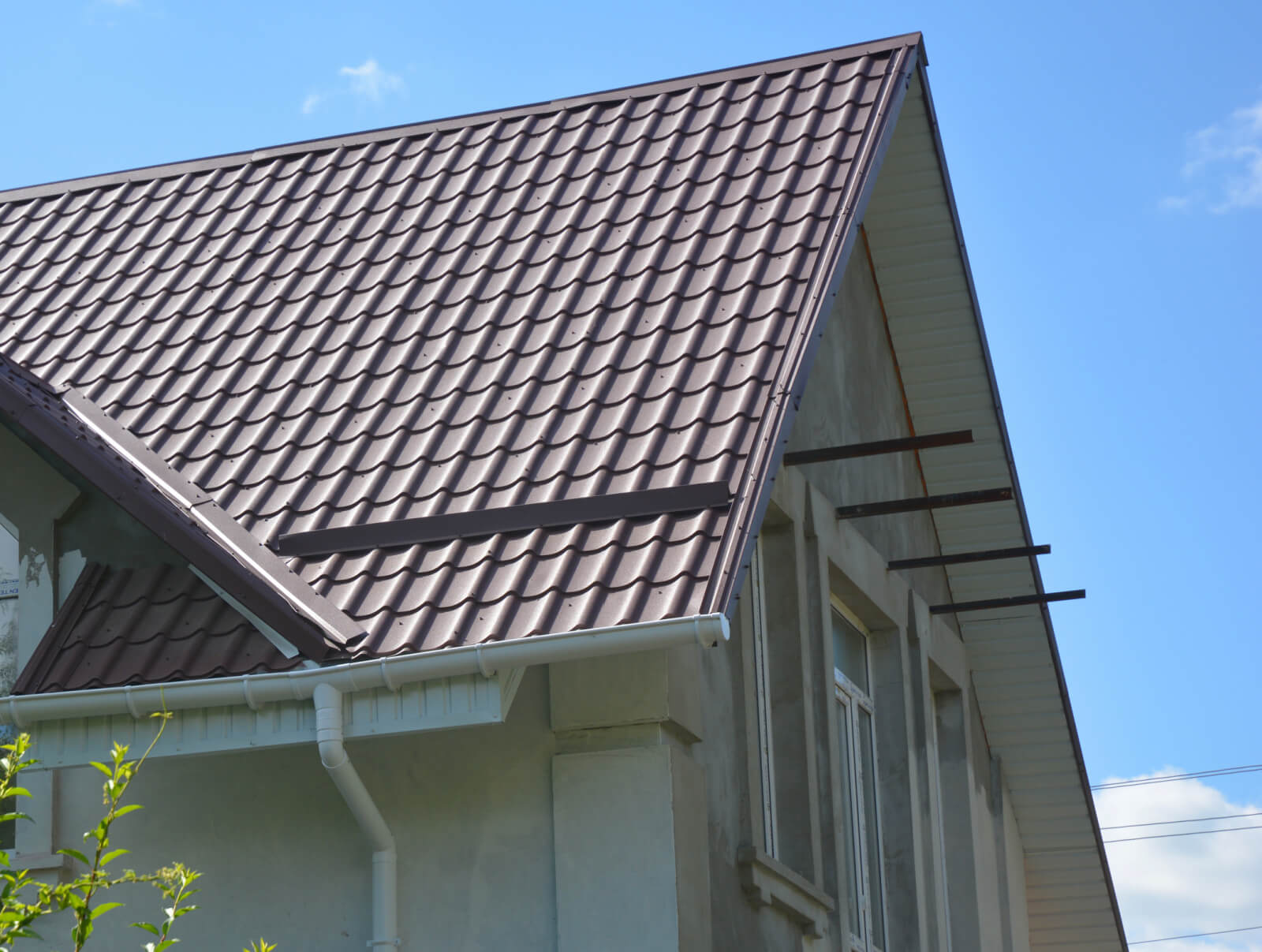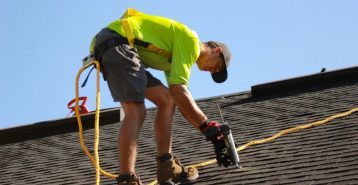Types of Roof Shingles
When most people think of types of roof shingles, asphalt comes to mind — and for good reason. Asphalt shingles are by far the most common and affordable choice. But they’re far from your only option.
From timeless cedar wood to sleek metal and even energy-producing solar shingles, there’s a wide variety of roofing shingle types to consider. Each type comes with unique advantages, drawbacks, and maintenance needs.
This guide will walk you through the most popular types of roof shingles, focusing on what sets them apart in durability, appearance, and performance, so you can make the right decision for your home.
» Note: If you’re researching costs, check out our Roof Shingle Cost Guide.
| Shingle Type | Relative Cost* | Lifespan | Key Features |
|---|---|---|---|
| Asphalt Shingles | Low | 15 to 50 yrs | Affordable, versatile |
| Wood (Cedar) | Medium to High | 20 to 25 yrs | Natural, rustic, higher maintenance |
| Composite | Low to Medium | 7 to 20 yrs | Lightweight, mimics slate/wood |
| Metal | Medium to High | 50 to 100+ yrs | Durable, energy-efficient |
| Slate | High | 60 to 150 yrs | Premium, natural stone |
| Solar | High | 20 to 30 yrs | Generates clean energy |
| Rubber | Medium | 15 to 30 yrs | Eco-friendly, impact-resistant |
| Tile (Clay/Concrete) | High | Up to 100 yrs | Classic, long-lasting |
*For detailed pricing breakdowns, see our Roof Shingle Cost Guide or our Roof Replacement Cost Calculator
Asphalt Roof Shingles
Asphalt shingles are America’s favorite for a reason: they’re affordable, easy to install, and available in tons of colors. Whether you’re replacing a roof or starting from scratch, asphalt offers a solid, budget-friendly solution. They come in several varieties:
- 3-Tab Shingles: Flat, uniform, and most affordable. Best for budget-conscious homeowners.
- Architectural Shingles: Layered look, better durability, one of the most common installations today.
- Luxury Shingles: Designed to mimic slate or wood shakes, offering premium aesthetics at a lower cost.
Lifespan: 15 to 50 years
Appearance: Traditional and versatile
Performance: Reliable fire/weather resistance, quick installation
» Looking for pricing? Explore our detailed Asphalt Shingle Cost Guide.
-
Pros
- Affordable upfront
- Quick to install
- Wide availability
-
Cons
- Can wear out faster in harsh climates
- Shorter lifespan than premium materials
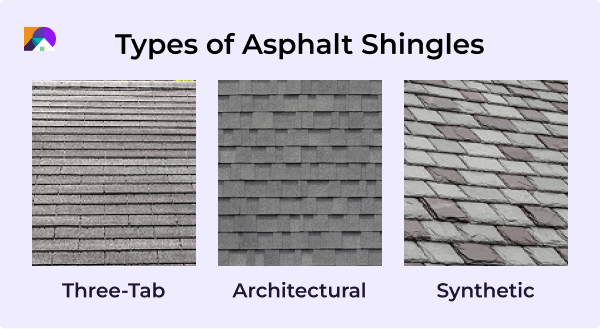
Wood (Cedar) Shakes & Shingles
Cedar shingles add warmth and timeless character to a home. They offer a natural, textured appearance that many homeowners love. Shingles are cut for a smooth, uniform look, while shakes are thicker and split for a rugged, rustic style.
Lifespan: 20 to 25 years
Appearance: Natural, warm, and textured
Performance: Requires regular upkeep, can be treated for improved fire resistance
» See detailed pricing and more in our Cedar Shingle Cost Guide.
-
Pros
- Beautiful, organic appearance
- Sustainable when properly sourced
-
Cons
- Needs regular maintenance
- Not naturally fire-resistant
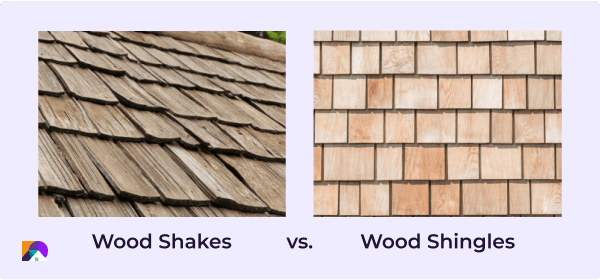
Composite Roof Shingles
Composite shingles are made from recycled materials and engineered to mimic premium products like slate or cedar, but at a lighter weight. They’re versatile, eco-friendly, and often easier to install than natural alternatives.
Lifespan: 7 to 20 years
Appearance: Mimics slate, shake, or other traditional styles
Performance: Lightweight, lower maintenance, durability depends on the manufacturer
» Read more, including costs, in our detailed Composite Shingle Guide.
-
Pros
- Lightweight
- Easy to install
-
Cons
- Not as long-lasting as slate or metal
- Durability depends on quality
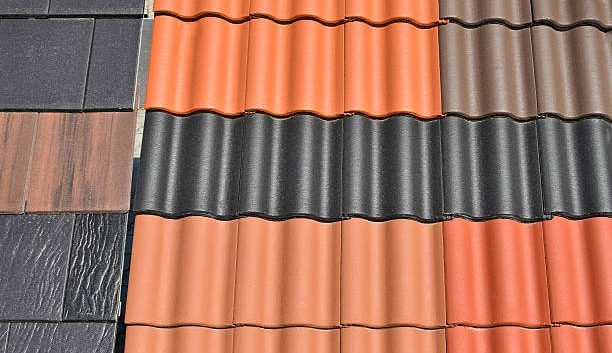
Metal Shingles
Metal roofing has grown far beyond barns and warehouses. Today’s metal shingles are sleek, stylish, and built to last. Available in steel, aluminum, copper, and more, they handle tough weather conditions better than most materials.
Lifespan: 50 to 100+ years
Appearance: Sleek, modern, or rustic, depending on the finish
Performance: Excellent durability, fire resistance, and energy efficiency
» For a full breakdown of styles, materials, and prices, see our detailed Metal Roof Cost Guide and Metal Roof Guide.
-
Pros
- Very long-lasting
- Energy-efficient
- Handles extreme weather well
-
Cons
- Higher initial cost
- Can be noisy in heavy rain without insulation
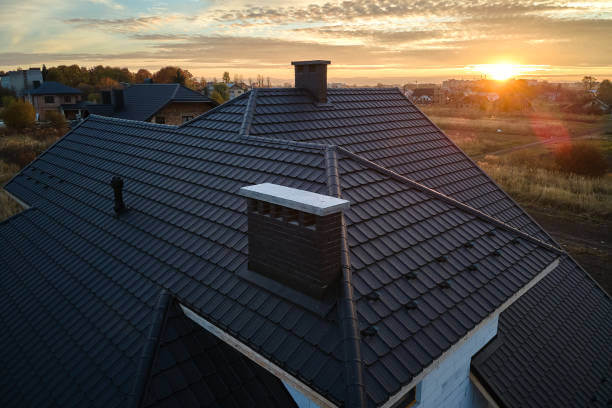
Slate Shingles and Tiles
Slate is the definition of premium roofing. As a natural stone, it offers unmatched longevity and beauty, with roofs that can last over a century. Synthetic and hybrid slate options are also available for a lighter, more affordable alternative.
Lifespan: 60 to 150 years
Appearance: Classic and high-end
Performance: Extremely durable, naturally fire- and weather-resistant, but heavy
» Learn more and explore pricing ranges in our Slate Roof Cost Guide.
-
Pros
- Extremely durable
- Beautiful, natural texture
-
Cons
- Very heavy
- Expensive to install
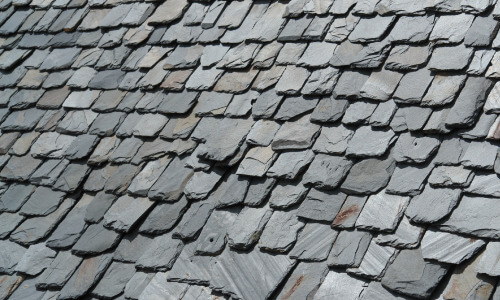
Solar Shingles
Solar shingles are a great choice if you want a roof that works for you (literally). They generate electricity for your home while still functioning as regular roofing. They also look less industrial than solar panels, so if you’re not a fan of the look of big rectangular panels on top of a home, these provide the benefit of solar without the eyesore. You’ll pay more upfront, but they can cut down your energy costs over time.
Lifespan: 20 to 30 years
Appearance: Sleek and low profile
Performance: Produces solar energy while protecting your roof; works best in sunny climates
» See installation costs in our Solar Shingle Cost Guide.
-
Pros
- Generates clean energy
- Reduces utility bills
- Looks less utilitarian than solar panels
-
Cons
- High installation cost
- Limited to sunny, south-facing areas for best performance
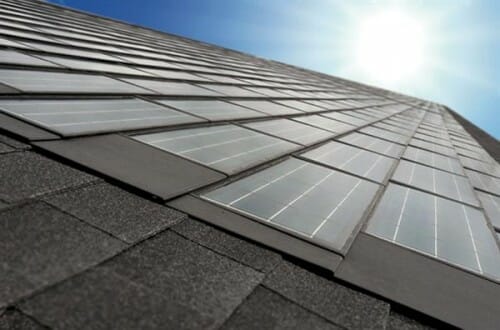
Rubber Shingles
Rubber shingles are eco-friendly and resilient, often made from recycled tires. They resemble asphalt in appearance but tend to perform better against impacts like hail.
Lifespan: 15 to 30 years
Appearance: Similar to asphalt
Performance: Strong impact resistance, energy-efficient, low maintenance
» Get a detailed cost breakdown of all rubber roof types in our Rubber Roof Cost Guide.
-
Pros
- Energy efficient
- Durable and low maintenance
- Sustainable material
-
Cons
- Not as widely available
- May cost more than asphalt shingles

Tile Roofing (Clay & Concrete)
While not technically a shingle (but what really makes a shingle a shingle?), tile roofing has been used for centuries, and for good reason. Clay tiles bring rich colors and a classic look, while concrete tiles offer a slightly more affordable but heavier alternative. Both are durable and naturally fire-resistant.
Lifespan: Up to 100 years
Appearance: Spanish or Mediterranean vibes
Performance: Long-lasting, great for hot climates, but requires a strong roof structure due to weight
» Read more and get a detailed pricing breakdown in our Tile Roofing Cost Guide.
-
Pros
- Very durable
- High curb appeal
- Holds up well in hot, sunny climates
-
Cons
- Heavy — may require additional roof support
- Can be pricey to install
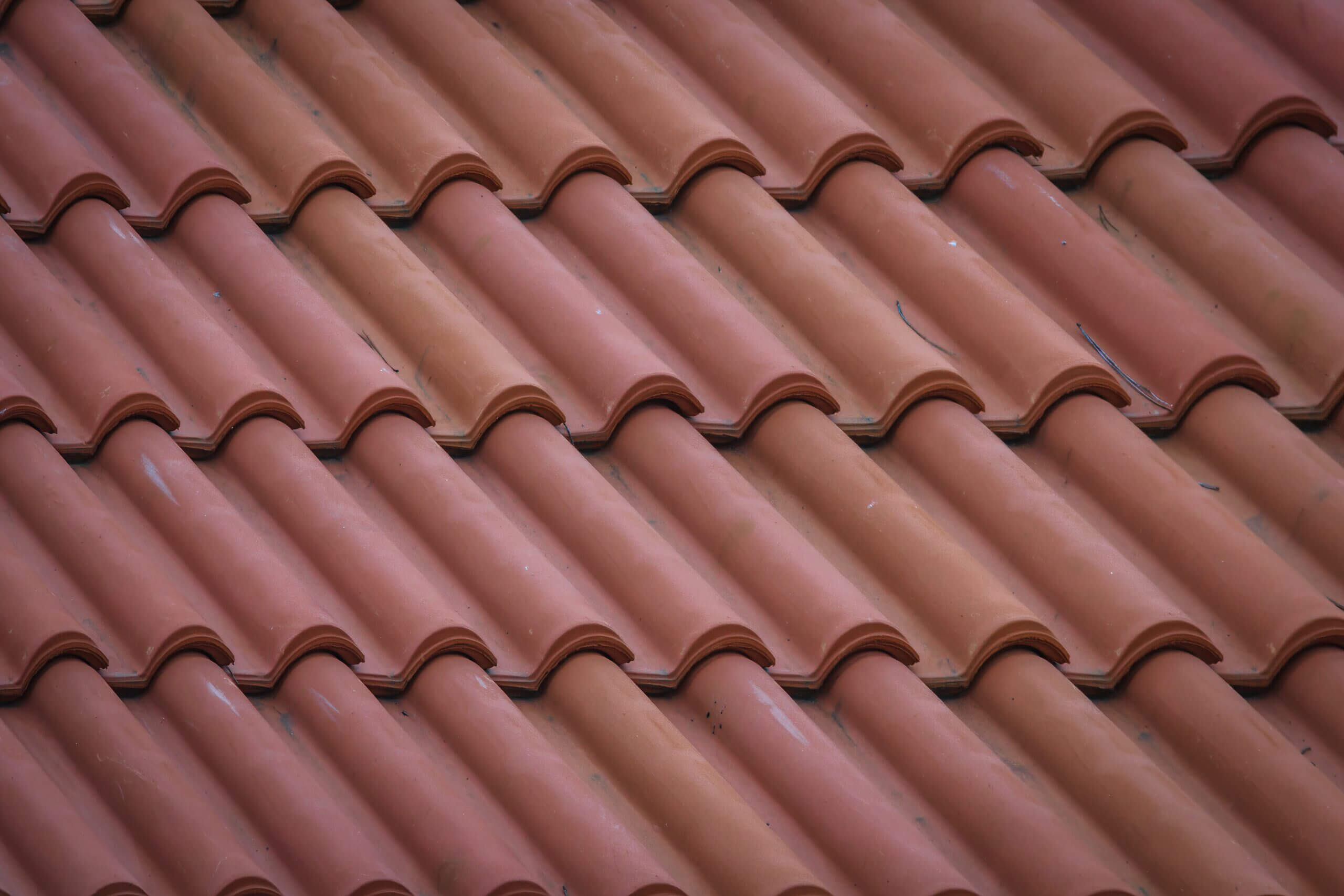
What Type of Roof Shingle Is Best?
There’s no single “best” shingle type; it all comes down to what you’re hoping to accomplish. If you’re watching your budget, asphalt or composite might be the way to go. Want something that lasts for decades? Metal, clay, or slate could be a better fit. Looking to lower your energy bills? Consider rubber or solar shingles.
Think about what matters most to you — cost, appearance, sustainability, or durability — and let that guide your decision.
FAQ: Roof Shingles
What type of roof shingles last the longest?
Slate and metal shingles typically offer the longest lifespans. Slate can last 60 to 150 years, while metal shingles often last 50 years or more with proper maintenance.
Which shingles are best for hot or sunny climates?
Tile, slate, and metal shingles handle heat and direct sun especially well. They reflect or withstand heat without deteriorating quickly, making them popular choices in warm-weather regions.
What type of shingles are best for energy efficiency?
Metal, rubber, and solar shingles are considered the most energy-efficient roof materials. Metal reflects sunlight, rubber insulates well, and solar shingles generate renewable electricity directly from your roof.
What are the most environmentally friendly roofing shingles?
Composite, rubber, and solar shingles often use recycled or sustainable materials and can reduce your carbon footprint compared to traditional asphalt. Cedar is also eco-friendly when sourced responsibly.
How do I choose the right type of shingle for my home?
Think about your priorities — whether that’s budget, appearance, durability, or sustainability. Asphalt shingles are affordable and versatile, cedar provides natural charm, slate and tile offer luxury and longevity, and solar shingles add renewable energy benefits.



